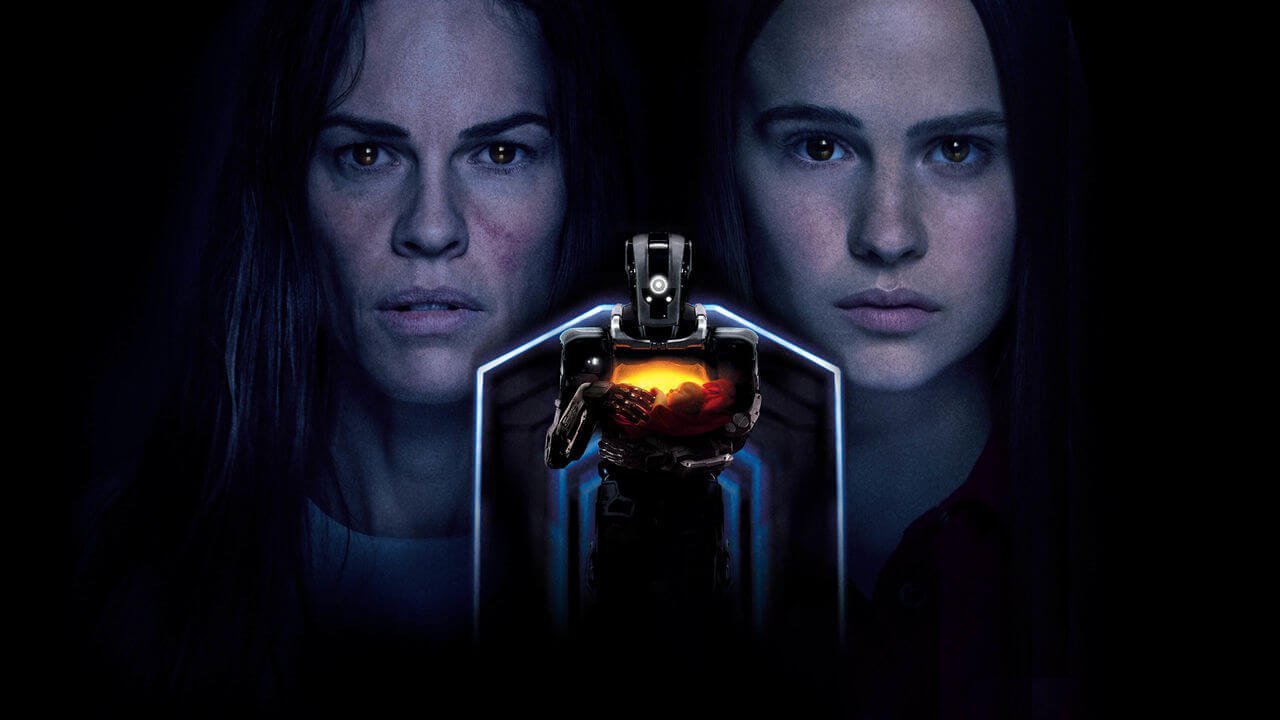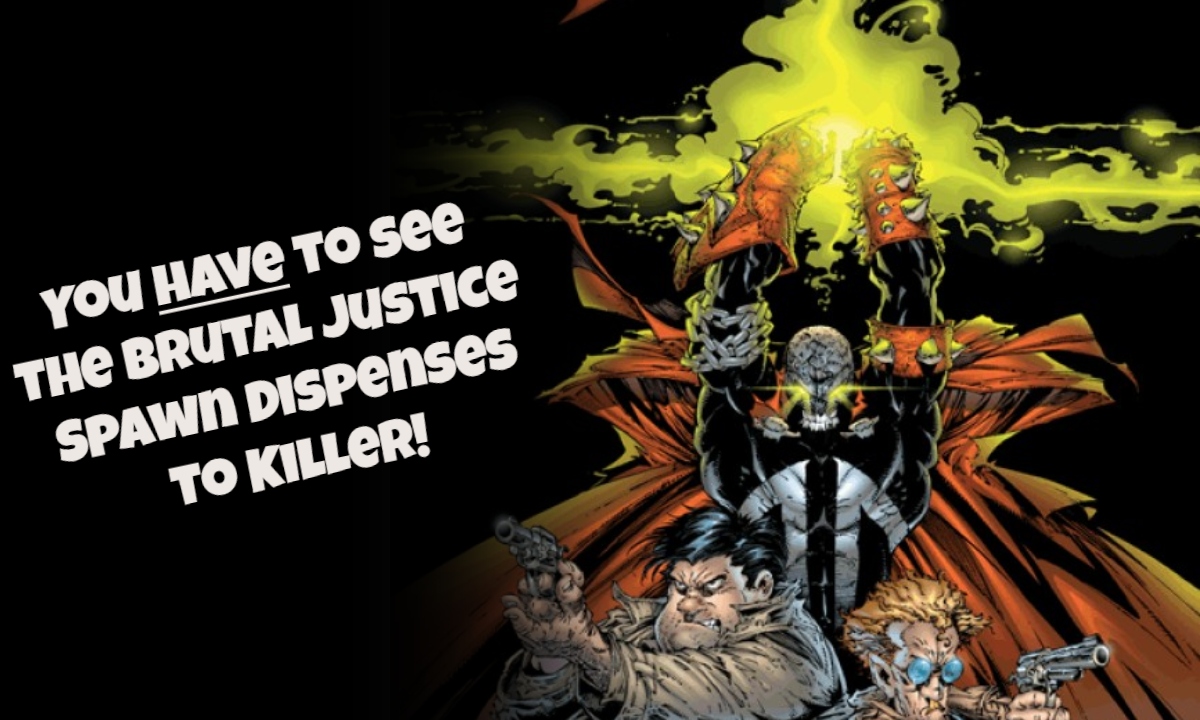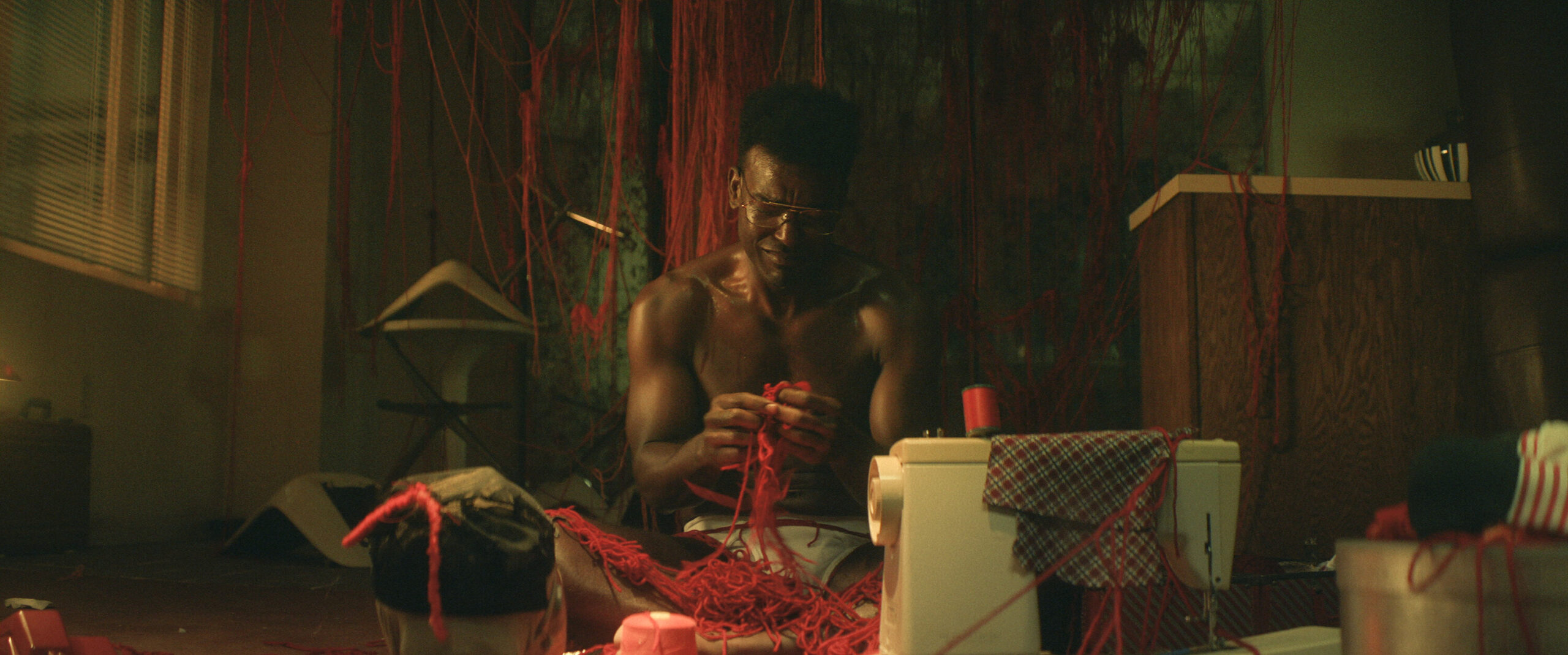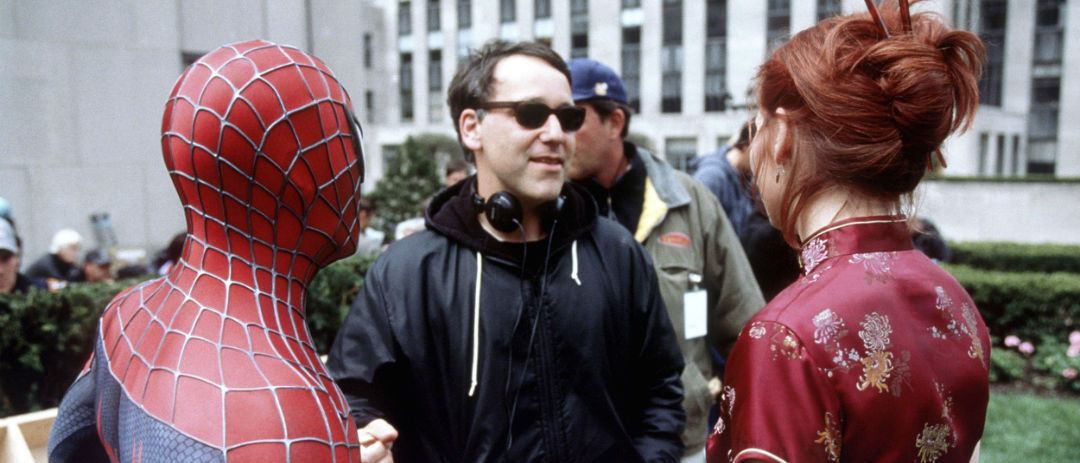Artificial intelligence will soon rule the Earth.
In Netflix’s I Am Mother, a daughter would soon learn that her mother, a robot, can be the most loving and caring parent—and yet, the most terrifying adversary in her life.
The film stars Hilary Swank, Clara Rugaard with Rose Byrne as Mother’s voice and Luke Hawker as the person playing inside Mother. The film is directed by Grant Sputore and was written by him with Michael Lloyd Green.
Here’s the synopsis:
I Am Mother is a sci-fi thriller about a teenage girl, who is the first of a new generation of humans to be raised by Mother, a robot designed to repopulate the Earth after the extinction of humankind. But the pair’s unique relationship is threatened when an injured stranger arrives with news that calls into question everything Daughter has been told about the outside world and her Mother’s intentions.
LRM Online exclusively spoke to director Grant Sputore over the film about his directorial debut. We talked extensively about Mother’s designs and working with Weta Workshop. We also talked about the set and the cast.
I Am Mother is now playing on Netflix today.
Read our interview transcript below.
LRM: Where did the initial concept came from for I Am Mother?
Grant Sputore: Michael [Lloyd Green] and I have been working together for 10 plus years at this point. We were very much looking to tell a story in the sci-fi space that was inspired by the world around us and what was going on in our own personal lives. The two things that seem to be kind of shouting loudly at us were whether or not we were ready to be parents and whether or not humanity was ready to sort of be the parent to artificial intelligence. They got sandwiched together in the story that became Mother. It quickly encapsulated with the image of a robot holding a baby. From there, we were like there’s a whole story now. Who is that robot? Who is that baby? What does that relationship look like?
LRM: Why did you want to make this a your directorial debut?
Grant Sputore: It just for those reasons, really. These are the questions I found most fascinating and connected to me most personally. It even connected with my heart and with my head. How do you work out who you are in this world? How do you impart that to a child? How is our relationship with technology? Is that a good thing? Is that a bad thing? How do we set ourselves up for success by making that relationship as healthy as possible?
In a practical point of view, if you guys are interested in the kind of the filmmaking side of it. The idea for this story was a direct reaction to a failure and Michael and my behalf to get another project. It was just too big. It was in a genre that wasn’t super commercial. We were excited about going back to the film that we loved growing up in a genre that is really popular right now. We tried to make a story that was contained and had fewer characters, but massive implications.
LRM: Well, you impressed me. For not a big budget film, this film looked very realistic to me.
Grant Sputore: Well, thank you, man. Throughout the whole process, we wanted to try and write the script for that first film, people often tell you to make a three characters in one location. It’s the foundation of great drama. It’s very affordable, because you’ve got one location or in three characters to pay for. We managed to sort of sneak through this big budget, high content film. I have one location happened to be a sprawling subterranean nuclear bunker and, uh, one of the three characters happened to be an autonomous robot.
LRM: Let’s talk about the robot first, Mother. How did you develop the look and concept of Mother?
Grant Sputore: We knew it was going to be practical from the outset. Well, two things that we knew from the outset. One of them was that we wanted a robot that was a robot, not a human on the outside that have robot inside. We felt like that territory had been well covered in so many sci-fi films before, not in the least with Blade Runner and a bunch of others. We wanted a robot that looked like the robots we were seeing in the headlines. In the news coverage, we wanted a robot that looked like what we’ve seen coming out of Boston Dynamics. It’s not only for budgetary reasons, but also of her own personal aesthetic preferences. We wanted Mother to be achieved practically. You face down the blank page with those two things in mind. How do we make a robot that looks like we’re seeing in the real world right now, but also to be able to hide a person in there as well. That’s a fairly confined, it had to look pretty cute. Pretty cool. Finally, the other thing I would throw around in the briefing sessions is that she needed to look benign.
It’s an emotional reaction you would have to seeing this robot would be based on her actions rather than like her appearance. If she was storming towards you down a corridor then you’d be afraid. If she was bringing you a cup of tea, then you’d be thankful. That would leave the audience a drift through the process of watching the film, not knowing is she good or is she bad. Bringing all of those different thoughts together into a cohesive design that really worked was largely about working with Weta Workshop and the geniuses they are. Their concept department iterating and trying lots of different things until you land on one that ticks all those boxes.

LRM: Who did you manage to get to be inside that robot?
Grant Sputore: I’ve told this story a couple of times, in terms of the crazy cross section of skills and attributes to be able to pull this off. From that performance, they needed to be able to act. We’re going to be delivering the dialogue within the scenes and deriving the character choices that make up a performance. They needed to be able to move physically, convincingly as a robot like. It needed to have this skill is akin to a dance. They needed to be small enough that they could be hidden inside the suit and not come busting out of the seams. You needed to be able to bulk them up with the wardrobe and hide them within. Then they needed to be able to be strong enough to sustain wearing it all day.
It’s a pretty small bull’s eye to be able to hit. The grand irony of the whole thing is that we given its importance. We searched high and low, because we needed somebody who was going to pull this off. If they didn’t pull it off, the whole film wouldn’t work. We found the perfect person working at Weta Workshop building in the suit. Luke Hawker, a project supervisor of Weta, was the one who ultimately wore the suit.
LRM: When I was watching the film, I could literally, sense or see the facial expressions off the robot. Tell me about the process of that why you decided to basically kind of input facial expressions when most movies–robots are emotionless.
Grant Sputore: We knew what kind of film we were making and the audience needed something to be reacting to. The face needed to be dynamic. As it would change, the audience would be left trying to read into the expressions. Is she lying? Is she telling the truth in this moment or not? It’s an emotional medium. It’s an emotional relationship between daughter and mother. We needed to be invested in that. So much of that is about having a character who’s alive in the space in particular. We were mindful from the outset that we needed some way to translate emotion.
I didn’t want it to be one-to-one. I didn’t want it to be obvious. I didn’t want to have eyebrows on the machine, which is like one of the most obvious ways to translate emotion in abstract and abstraction. It was a process of experimentation. It was tricky. We did many different variations on before landing on where we have it.
We studied other examples too. The way that robot WALL-E communicates emotion, which is largely about the binocular effect of its eyes tilting to create like an inferred eyebrow. We looked at Chappie using the bar that sits above his eyes again as an insert eyebrow. We would just want to just make sure that we were doing something different to what we’d seen before. We were quite pleased when we came up with the combination that we did. You can sort of feel the emotion there, but it’s not that traditional face really. It’s not a human face.
LRM: The voice is always important. You found a voice that is both soothing and terrifying. Talk about Rose Byrne.
Grant Sputore: You hit the nail on the head. That’s definitely what we were looking for there. We wanted somebody that had a voice that would soothing, but also sounded like a deep wisdom behind it. That certainly the feeling you get when you meet with Rose. She’s affable. She’s friendly. She’s lovely. She’s super, super smart. That’s all we wanted with Mother.
LRM: You had an Academy Award winner, Hilary Swank, in the film. Talk about having a big name land in your film like this. How was it working with her?
Grant Sputore: I was a huge get. Getting Hilary was the literal dream come true. Michael and I developed a screenplay on either sides of the world. We needed like a shorthand to be able to get on the same page really quickly when talking about concepts. When we were talking about the woman, the part that Hilary plays in the film, we actually said, “It’d be great to get Hilary Swank taught in this role.” Unbelievably to us, we ultimately ended up with Hilary, which is super surreal.
When I first spoke to Hilary, I was nervous. She was the linchpin that was going to get this film made and get people excited about this film. It was incredibly important that she said yes. All of those views were immediately set aside the minute I started talking to her, because she was so passionate about this project. She was talking about it like she was already going to do the movie. There was no convincing necessarily. She just wanted to get straight into talking about the character. How she saw the character. How she wanted to bring the character to life on screen.
That translated the same experience when she showed up on set. Take one, first day of the first shot, she was incredible. I was able to just relax from that point and aim the camera at her to let her do her thing. I was constantly blown away by what she was giving me.
LRM: Most importantly, I have to talk about the person who anchored the movie Clara [Rugaard]. Why was she perfect for this film?
Grant Sputore: You saw the film. It’s hard to quantify, but she just had something. She had something that’s really special, which was kind of like Rose. It was fitting given that daughter is raised by Rose. She’s just a lovable, likable, sweet, kind-hearted, but super smart and super talented. Exactly the kind of person that you hope could be the best reflection of humanity, encapsulated in one in one human being.
We weren’t actually looking for actresses to play that part outside of Australia. She sent in a tape of her own accord. When we got the tape, we were blown away and Clara basically immediately got the part.
LRM: Did you build the entire set in Australia from the ground up? Was this a claustrophobic set?
Grant Sputore: Yeah, that’s right. The film is set largely on sound stages. The only stuff that we shot on location is the engine room within the facility. Everything else is a stage. It’s still viewable 360 degrees. You can go on there and you could shoot in any direction. The space was lit and ready to go, which was a major time saver for us. We could turn the camera around and shoot one way and then turn and shoot the other. It maybe three to four minutes of delay. Basically, the DP would radio the guy at the control desk that had access to all of the lights. He could just dial up and down a look as required.
LRM: Wow. That is quite impressive. Would you like to direct again? What are your future projects?
Grant Sputore: Yeah, absolutely. I’ve got a number of different projects that I’m excited about. Michael and I are actually working together on a project with a studio at the moment. Excited to see where that leads. I hope that I get to keep doing this for awhile.
LRM: One last question for you. Your film here was shown at the Sundance Film Festival. What was your initial reaction when you heard Netflix was picking this up?
Grant Sputore: I was ecstatic. This film is made in Australia as an independent movie. Like any independent filmmaker making their first project, your hope is that you find your way to an audience. There’s no guarantee going in that it’s going to get shown anywhere. Getting into Sundance was like mind blowing dream come true. Then to find out that Netflix was going to take it off and share it with the biggest audience imaginable–it’s incredible. I was, I was stoked.
LRM: It’s been a pleasure speaking with you. I really enjoyed your film.
Grant Sputore: Thank you, man. So glad to hear it.
I Am Mother is now playing on Netflix today.
Source: LRM Online Exclusive

 FOR FANBOYS, BY FANBOYS
Have you checked out LRM Online’s official podcasts and videos on The Genreverse Podcast Network? Available on YouTube and all your favorite podcast apps, This multimedia empire includes The Daily CoG, Breaking Geek Radio: The Podcast, GeekScholars Movie News, Anime-Versal Review Podcast, and our Star Wars dedicated podcast The Cantina. Check it out by listening on all your favorite podcast apps, or watching on YouTube!
Subscribe on: Apple Podcasts | Spotify | SoundCloud | Stitcher | Google Play
FOR FANBOYS, BY FANBOYS
Have you checked out LRM Online’s official podcasts and videos on The Genreverse Podcast Network? Available on YouTube and all your favorite podcast apps, This multimedia empire includes The Daily CoG, Breaking Geek Radio: The Podcast, GeekScholars Movie News, Anime-Versal Review Podcast, and our Star Wars dedicated podcast The Cantina. Check it out by listening on all your favorite podcast apps, or watching on YouTube!
Subscribe on: Apple Podcasts | Spotify | SoundCloud | Stitcher | Google Play




